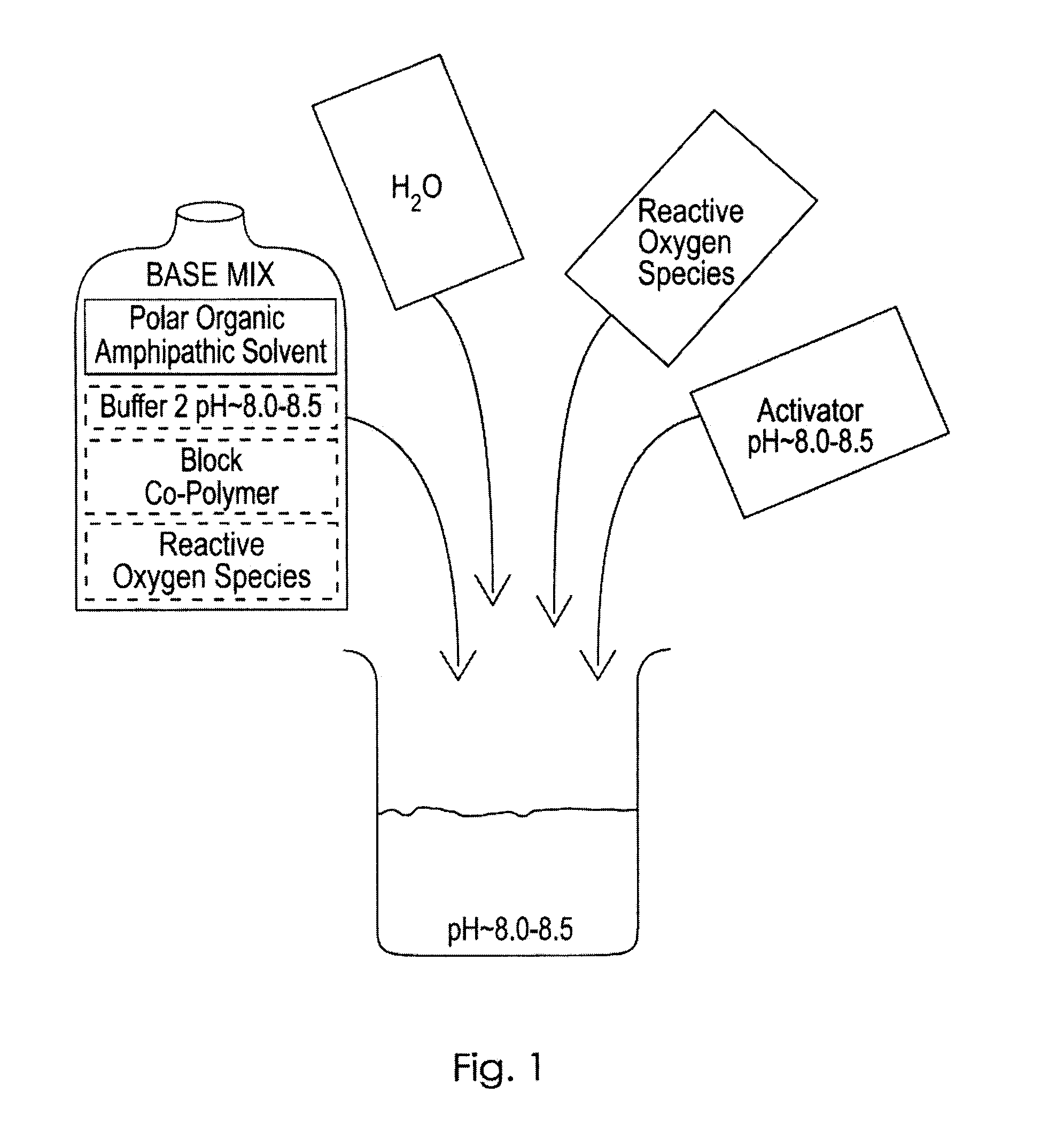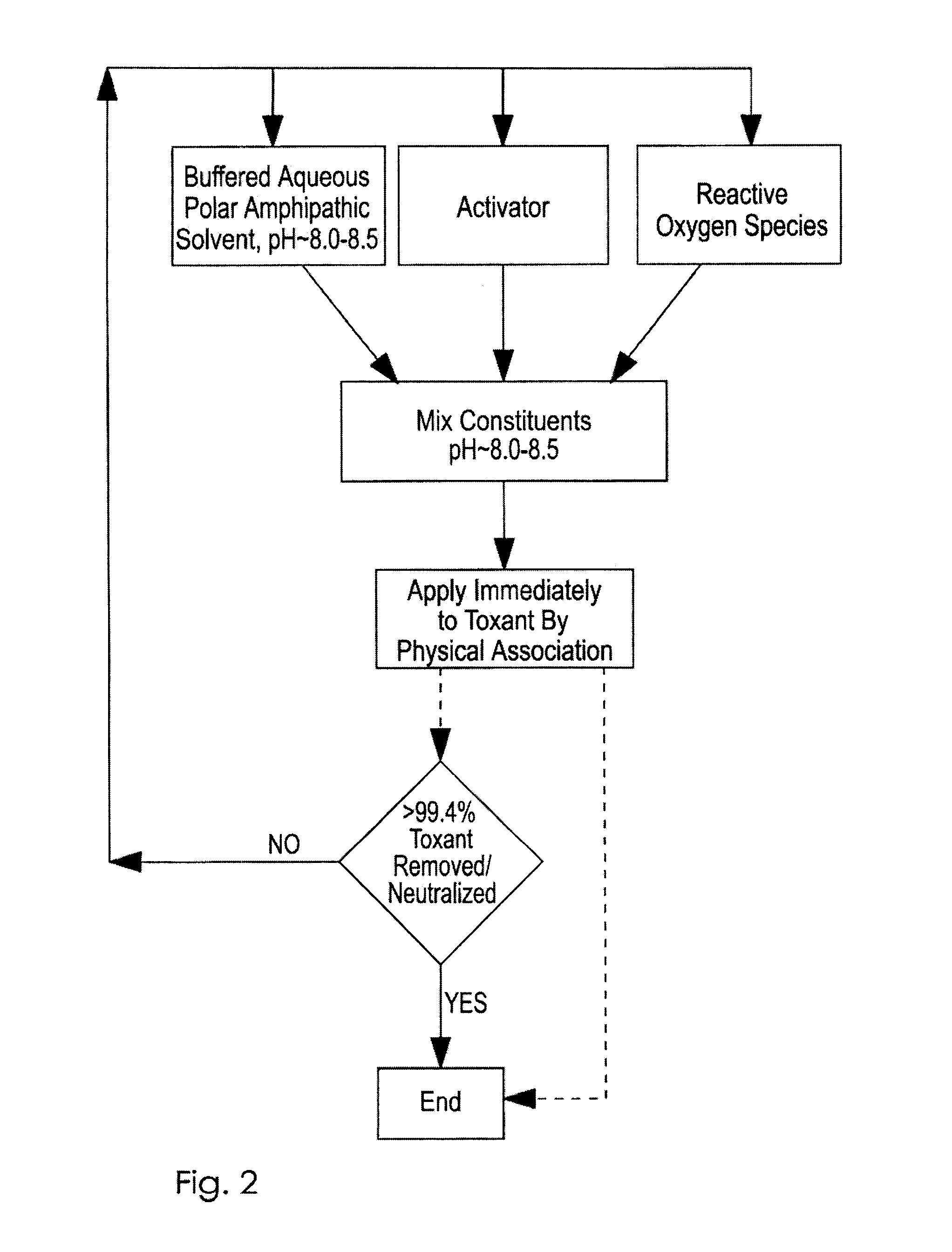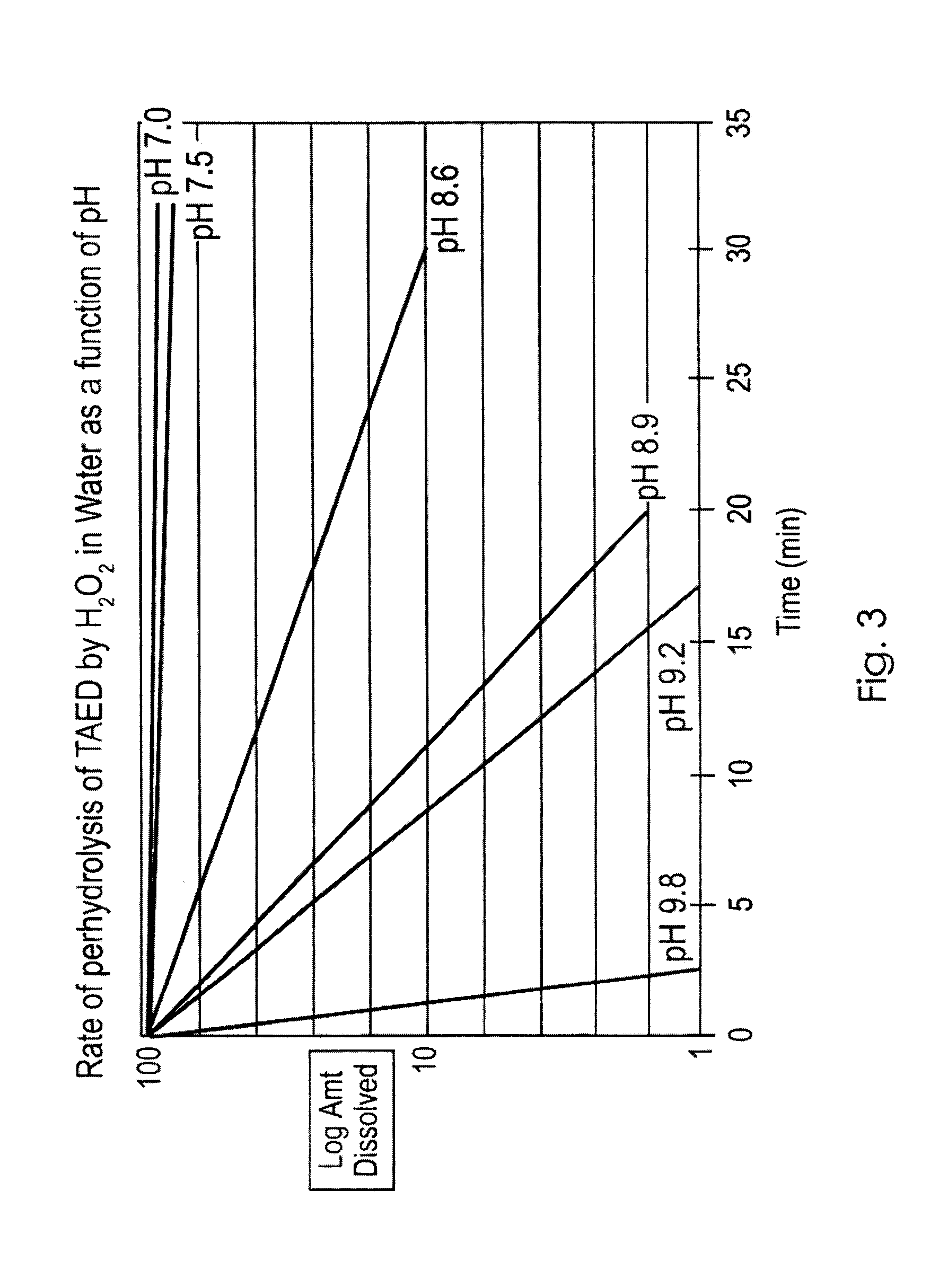Novel Chemistries, Solutions, and Dispersal Systems for Decontamination of Chemical and Biological Systems
a technology of chemical and biological systems and dispersal systems, applied in the direction of biocide, disinfectants, amide active ingredients, etc., can solve the problems of increasing terrorist threats based on the use of chemical and biological toxants, chemical pollution of water resources is one of the major threats to sustainable water resource development and management, and death, incapacitation, or permanent harm to humans, animals or other organisms
- Summary
- Abstract
- Description
- Claims
- Application Information
AI Technical Summary
Benefits of technology
Problems solved by technology
Method used
Image
Examples
example 1
[0255]The melting point of a solution of 9% isopropyl alcohol PA, 9% H2O2, and 82% H2O by volume can be determined. CH3—CH(CH3)—OH does not dissociate appreciably and forms an ideal solution. 2 moles of hydrogen peroxide are disproportionate
H2O2→H2O+O2
so the solute is CH3—CH(CH3)—OH. The concentration of CH3—CH(CH3)—OH is 8% v / v=80 ml / L; the density of CH3—CH(CH3)—OH=0.7855 g / ml; the solution contains 0.7855 g / ml×80 ml=62.84 g; the molecular weight of CH3—CH(CH3)—OH=60.10 g / M. 62.84 g / 60.10 g / M=1.046 Moles is added to 920 ml water with a density of 1 g / ml. Then ΔT=kfm=1.86° C. kg mol−1×1.137 molal=2.11° C. and the freezing Point=(0−2.11)° C.=−2.11° C.
example 2
[0256]The amount of glycol (1,2-ethane-diol), C2H6O2 which must be added to 1.00 L of H2O such that the solution does not freeze above −20° C. may be calculated as follows:
m=ΔTikf=20.0°C.1.86°C.kgmol-1=10.8molal
where kf (H2O)=1.86° C. kg mol-1; ΔT=i kf m where i=1. Since 1.0 L has a mass of 1.0 kg, 10.8 mol of ethylene glycol is needed, so 10.8 mol×62 g / mol=670 grains of ethylene glycol. The density of ethylene glycol is 1.1088. Therefore, 670 g / 1.1088 g / mL=604 ml, which is dissolved in 1 L=6.04 ml in 10 ml. At this concentration, the viscosity of such a solution renders it unusable for aerosol spraying.
example 3
[0257]The amount of NaCl that must be added to 1.00 L of H2O to decrease the freezing point to −20° C. can be calculated:
m=ΔTikf=20.0°C.1.86°C.kgmol-1=5.376molal
where NaCl(s)→Na+(aq)+Cl−(aq) i=2 and i kf=2 (1.86° C. kg mol−1). Therefore, 5.376 mol×58.44 g / mot=314.17 g NaCl must be added to 1 kg (1 L) of H2O.
PUM
| Property | Measurement | Unit |
|---|---|---|
| temperature | aaaaa | aaaaa |
| temperature | aaaaa | aaaaa |
| temperature | aaaaa | aaaaa |
Abstract
Description
Claims
Application Information
 Login to View More
Login to View More - R&D
- Intellectual Property
- Life Sciences
- Materials
- Tech Scout
- Unparalleled Data Quality
- Higher Quality Content
- 60% Fewer Hallucinations
Browse by: Latest US Patents, China's latest patents, Technical Efficacy Thesaurus, Application Domain, Technology Topic, Popular Technical Reports.
© 2025 PatSnap. All rights reserved.Legal|Privacy policy|Modern Slavery Act Transparency Statement|Sitemap|About US| Contact US: help@patsnap.com



